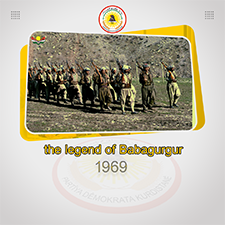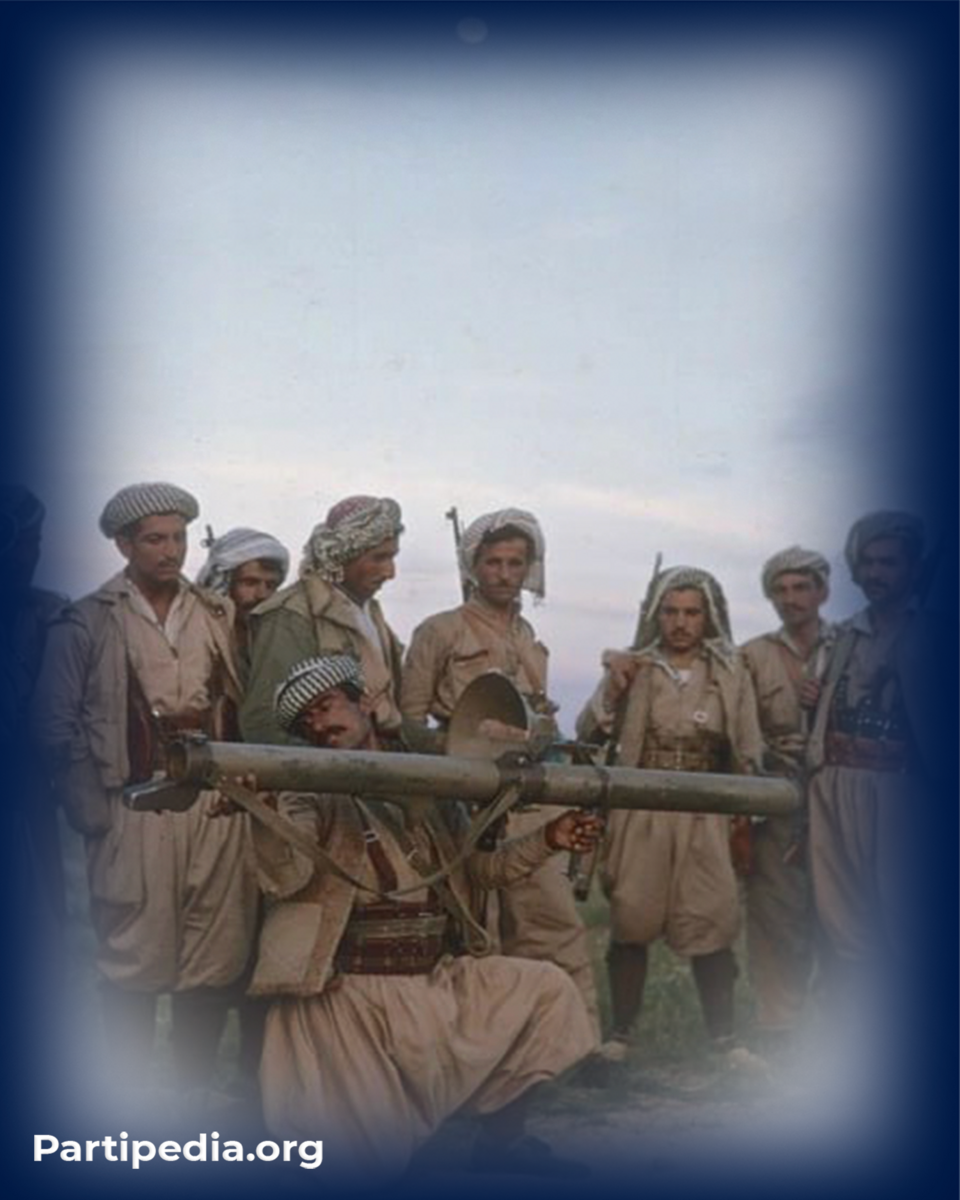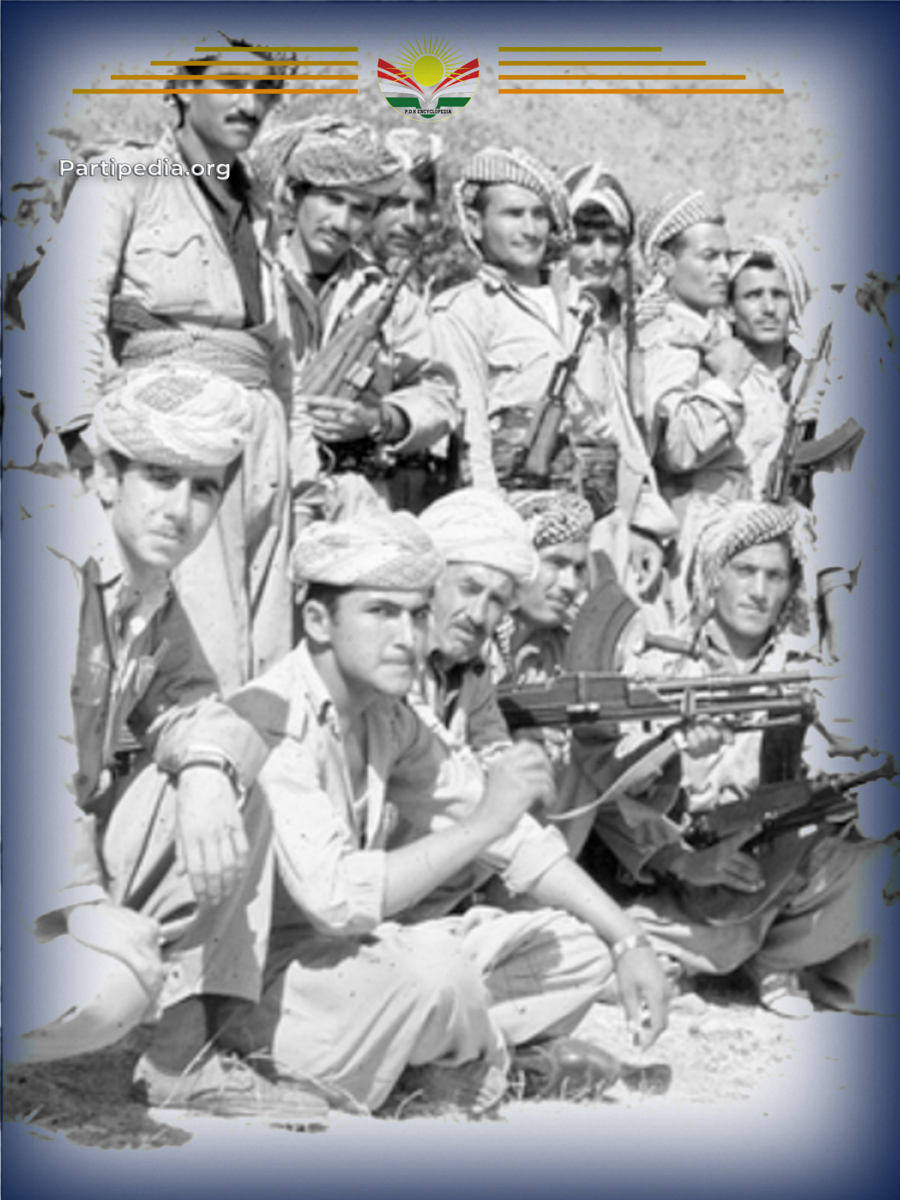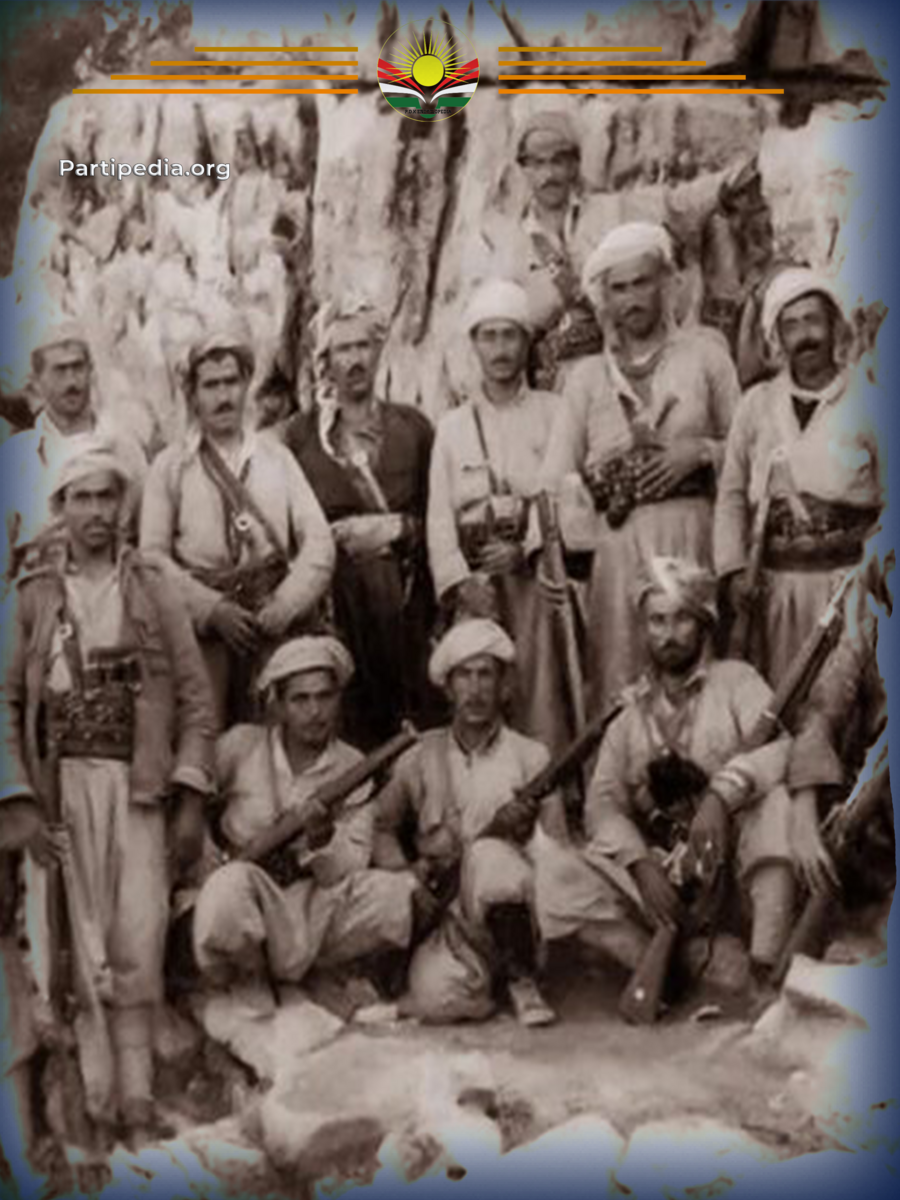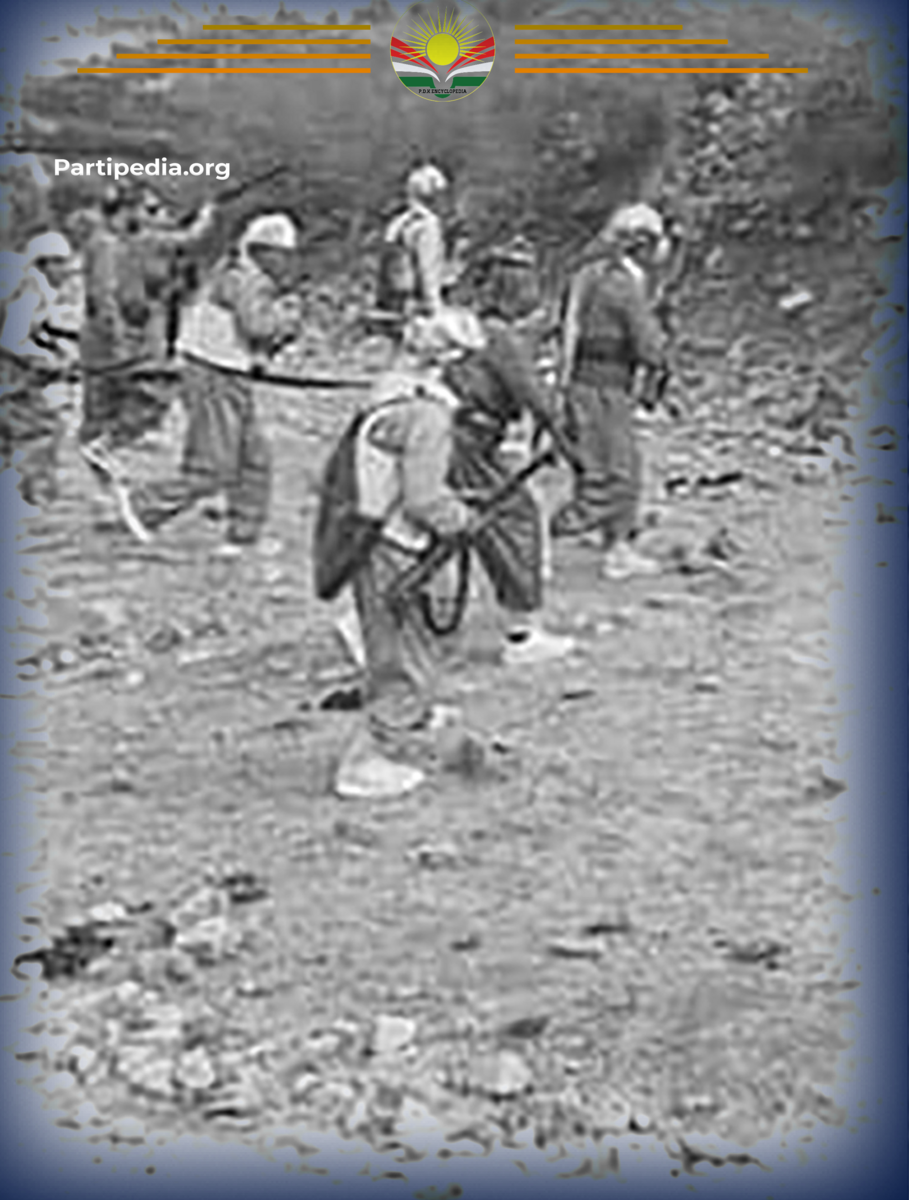On March 1, 1969, Sami Abdulrahman and other commanders received orders from the revolutionary leadership to carry out a Peshmerga campaign against the Babagurgur oil company in Kirkuk. After completing their preparations, they heavily shelled the facility using 120mm and 106mm cannons, causing significant damage and setting fire to the Tarkiz factory. The Peshmerga forces then ordered a withdrawal without any harm to their bases or headquarters.
According to Massoud Barzani in his book Barzani and the Kurdish Liberation Movement, the revolutionary leadership had been thinking about striking the oil facilities for some time, for some obvious reasons, including:
-
Oil resources were used by many parties, but the Kurds were deprived of them.
-
The proceeds of this oil were used to buy weapons and destructive bombs and then tested on the Kurds.
-
The Kurdistan Revolution also needed new activities to prove its strength to the new Iraqi regime.
The Ba'athists seized power for the second time in a coup d'etat on July 17-30, and The aim was to do something meaningful to the government and cause significant damage, and to send a clear message to the Ba'athists that the Kurds could access the government's largest economic resource.
Apparently, the Peshmerga had attacked the oil pipelines more than once before, but neither the government nor the oil companies were so upset. But after the revolutionary leadership was desperate to reach an understanding in Iraq on dialogue and a solution to the Kurdish problem, Then, they decided to carry out such an operation and began to prepare and implement the plan of the attack. On the evening of March 1, 1969, a special force of the revolutionary leadership attacked the Kirkuk Oil Company and cause significant damage and spread the voice of Kurdish protest to the world.
Sami Abdulrahman was entrusted with the task of leading this action with a group of experienced commanders who assisted him, such as: Fakir Mergasuri, Fars Bawa, Hamasur Hussein, Ezadin Qara Mohammed, Arif Darwish and Qadir Jabari. After a detailed study, a complete map was drawn up, and they found out that the primary indication (TARKIZ plant) must be that oil is collected from all oil wells after passing through continuously operating gas separation plants and then goes to the warehouses where oil is exported.
During an interview, Sami Abdulrahman revealed that individuals of Kurdish descent employed at the oil company were utilized to gather information. Following a thorough investigation, it was discovered that the oil was separated from the gas at the separation stations and transported to the Tarkiz Factory in northern Kirkuk, where it was collected from 10-12 different gas stations before being sent to Keywan. From there, it was transported via pipeline to Syria and the Mediterranean Sea. Abdulrahman believes that targeting the oil storage warehouse would be the most effective way to impact the oil company.
Preparations for the event took two months. Experts in the field of such activities visited the area several times to find a suitable place to conduct the attack successfully. The plan of the action was planned in the utmost secrecy, and the information did not leak to the government intelligence agencies. After several meetings with the participation of Idris Barzani, the first military chief of the revolution, A group of young men from the Halgurd force were put through a special course to train on the weapons allocated for this purpose, such as 120mm and 106mm cannons. In particular, reliance was placed on the 106mm cannon as it was flammable. Sami Abdulrahman and Fakir Mergasuri left Ghalal. In Erbil, Fars Baway, commander of the Erbil Plain Force, and Hamasoor, commander of the Shwan Battalion near the oil facilities, joined them in Erbil. Then they determined where to set up the cannons.
Data collection preparations were completed at the end of December 1969. February 15 was the last phase of training. Qadir Jabari said in an interview: " We left Choman in a freezing winter with a lot of snow. On the way from Khanaqa to Warte, we had a lot of difficulty in transporting the cannons and ammunition until we reached the (ZENE ASTEROKAN). Fortunately, the people of Warte helped them a lot and generously offered their assistance. More than 100 mules loaded with artillery and ammunition were transported to the Erbil plain by mountain road.
After the completion of the initial preparations, on February 25, 1969, to deceive the government, the Revolutionary Defense Agency disseminated several news that the Peshmerga intended to conduct a large-scale guerrilla campaign in the Erbil plain. The aim was to draw the government's attention to the Erbil plain and to move more troops to weaken the other fronts. The result of this deceptive military propaganda campaign was the transfer of a regiment from Redar, which was a significant source of heartache for the Peshmerga. Because it was a terrible obstacle to the operation's success, the regiment was moved to the Erbil plain, making it easier for the Peshmerga to carry out the operation.
On the night of March 1-2, 1969, the Peshmerga forces arrived at their designated locations, according to the map. At 9 pm, the company's installations were bombarded by cannons for about two hours. The warehouse of Tarkiz was set on fire, and the flames were colossal, covering the sky. At 11 o'clock that same night, the leadership received a letter from Sami Abdulrahman, confirming that the Peshmerga forces had completed their task successfully. In case of a counter-government attack, about 800 Peshmergas were ready to protect the cannons and retaliate against the army's attack. These forces were stationed across Yarwail, Stop Line, Gunpowder behind Rahimawah, Daraman, Taqtaq Road, and Altun Kopri.
Approximately thirty minutes after the oil company was set on fire, the Iraqi army soldiers launched an attack on the Peshmerga from both the Stop Line and Rahimawah fronts. The Peshmerga, consisting of 300 soldiers, fought back with heavy artillery such as cannons, machine guns, and RPGs. The Iraqi army attempted to attack twice and seize the canons used in the operation but was unsuccessful in reaching their target. From 10:00 am to 1:30 pm, the Peshmerga continued to defend against the army's assault and inflicted significant damage. Eventually, the Peshmerga forces withdrew, and the aircraft continued to bomb the areas of Shuan and Jabari for the following day. It's worth noting that after this impressive action in Kirkuk, the Peshmerga returned unscathed and sent a message of victory to Barzani, the revolution's leader. Barzani sent a congratulatory letter to the Peshmerga, expressing his gratitude.
A year later, the magazine Ahl al-Naft, published by the oil company, mentioned the repair of the damaged sites. It took eleven months to repair them because they were so severely damaged. It is worth mentioning that this attack on the oil company in Babagurgur was an outstanding victory for the revolution. It was an open message to the Ba'ath regime that the revolutionary forces were capable of reaching deep into Iraq and attacking their interests. At the same time, it had a great resonance inside and in the international media. The prolongation of the Kurdistan war had plunged the Iraqi government into a major financial crisis and increased debt. Because the daily fighting cost millions of dinars, in addition to many killings, all these were important reasons for the government to negotiate with the revolutionary leadership. The only reaction and counter-reaction from the Iraqi government and the Iraqi army was barricading the company's facilities with tanks and infantry to protect them.
Resources:
-
مسعود بارزانی: بارزانی و بزوتنەوەى ڕزگاریخوازی کورد، بەرگی سێیەم، بەشی یەکەم، شۆڕشی ئەیلوول ١٩٦١-١٩٧٥، چاپخانەى وەزارەتى ڕۆشنبیرى، چ: یەکەم، هەولێر، ٢٠٠٤.
-
کاروان جوهر محمد: ئیدریس بارزانى ١٩٤٤- ١٩٨٧ ژیان و ڕۆلى سیاسیى و سەربازى لە بزوتنەوەى ڕزگاریخوازى کورددا، چاپخانەى هێڤی، هەولێر، ٢٠١٩.
-
شەوکەت مەلا ئیسماعیل حسن: ڕۆژانێ لە مێژووى شۆرشى ئەیلوول، چاحى یەکەم، هەولێر، ٢٠٠٧.
-
ئارى کەریم: چەند لاپەڕەیەکى زیندوو لە شۆڕشى ئەیلوولدا، چاپخانەى خەبات، دهۆک، ١٩٩٩.
-
ئیبراهیم جەلال: باشورى کوردستان و شۆڕشى ئەیلوول بنیادنان و هەڵتەکاندن ١٩٦١- ١٩٧٥، چاپی چوارەم، ٢٠٢١.
-
هاوکار کەریم حەمە شەریف: شۆڕشی ئەیلوول، چاپخانەى زانکۆى سەلاحەدین، چاپى یەکەم، هەولێر، ٢٠١٢.




